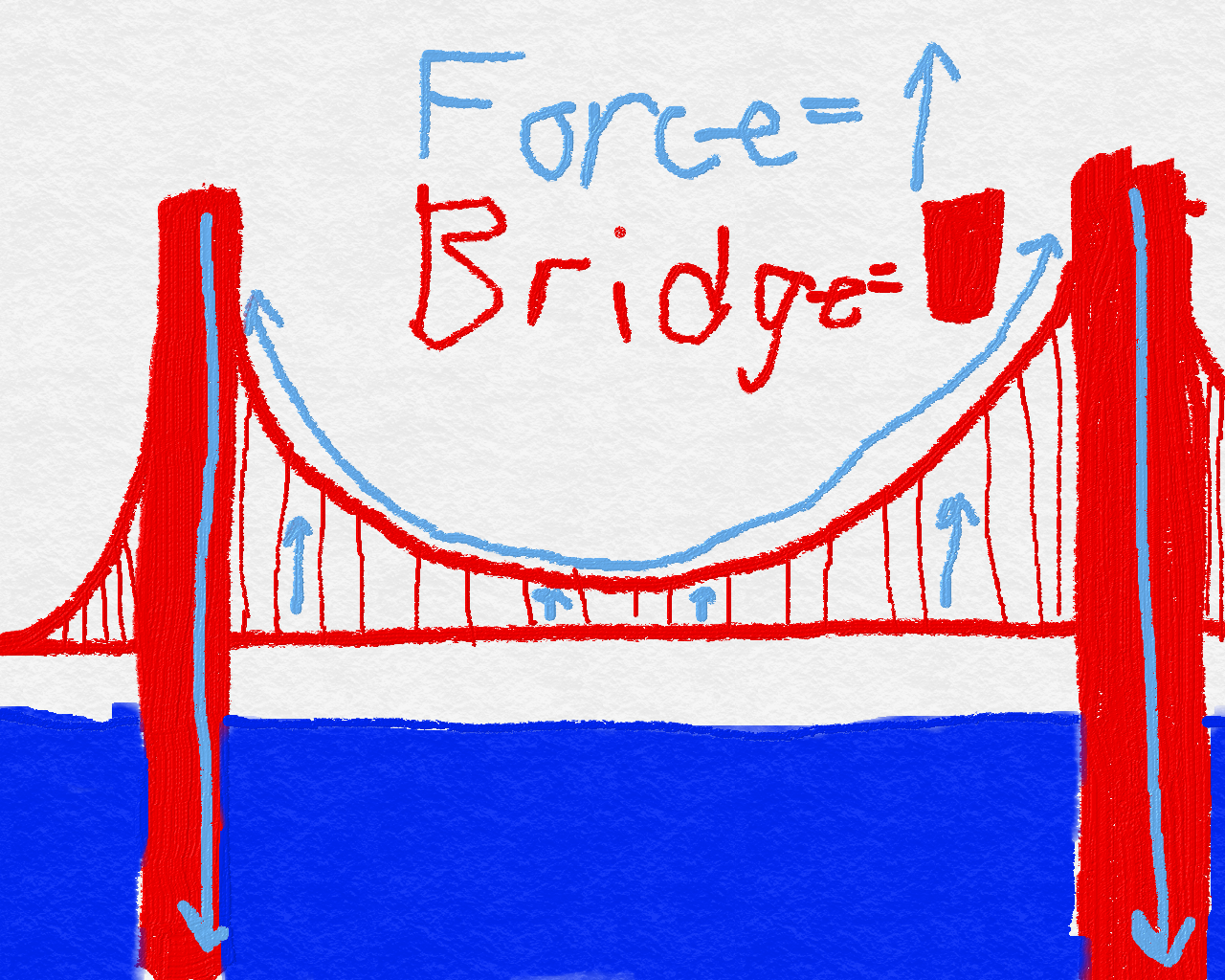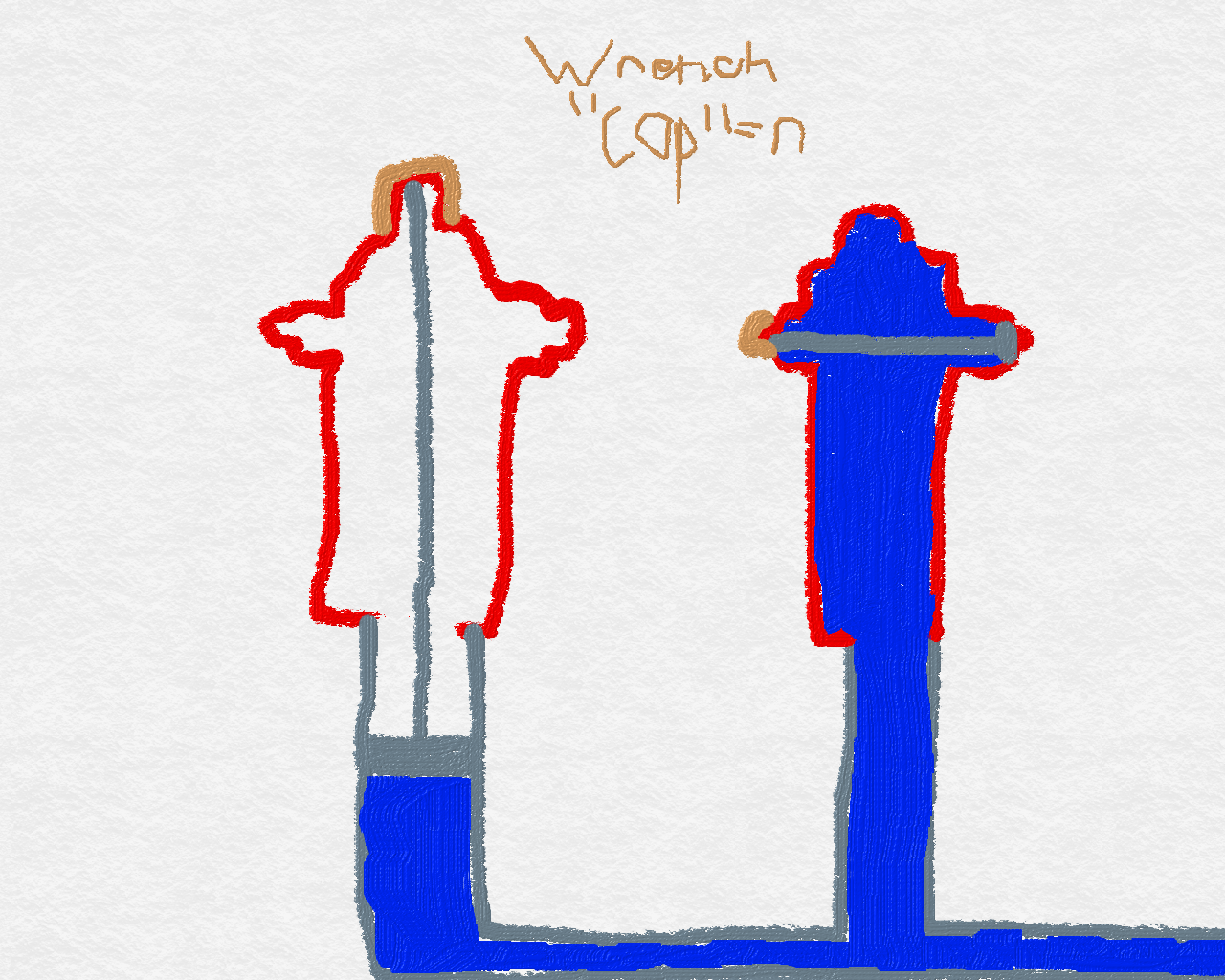Inventions
- Suspension Bridge
- Fire Hydrant
- Locomotive
Suspension Bridge
An early form of the suspension bridge was invented in the middle ages, in the form of vines (and later chains) with wood planks stretched across them. The suspension bridge was improved a lot by James Finley when he invented the modern suspension bridge like in the picture below.
The suspension bridge works like this:

One of the impacts of the suspension bridge was travel was made easier over water. The bridge allowed people to get to other cities over rivers and maybe even small bays.
Fire Hydrant
Frederick Graff invented the wet barrel fire hydrant out of the fire plug around 1800 AD. The fire plug was a hole in the sewer pipe for water to come out of. The wet barrel had water flow up through the barrel to a valve above ground. One disadvantage of the wet barrel is that the water freezes because it is above the frost line, and that stops the water from being available to fight the fire. However, the dry barrel keeps the water under the frost line with an underground valve, so therefore the water doesn’t freeze. Below I have a picture of a dry barrel on the left, and a wet barrel on the right.

The fire hydrant’s impact was that fires could be fought easier and so more lives and property were saved.
Locomotive
The locomotive had a VERY big impact on history, as it was the first steam powered method of transportation. Using the Watt steam engine, the train would have the rotational motion connect to the wheels and the train would then move along the tracks. Trains allowed transportation all over the countries of France, Britain, the United States Of America, and others.
My Favorite Invention This Week
My favorite invention this week was the fire hydrant. I learned how they work for the first time ever. I think fire hydrants are interesting pieces of machinery. That is why the fire hydrant was my favorite invention this week.